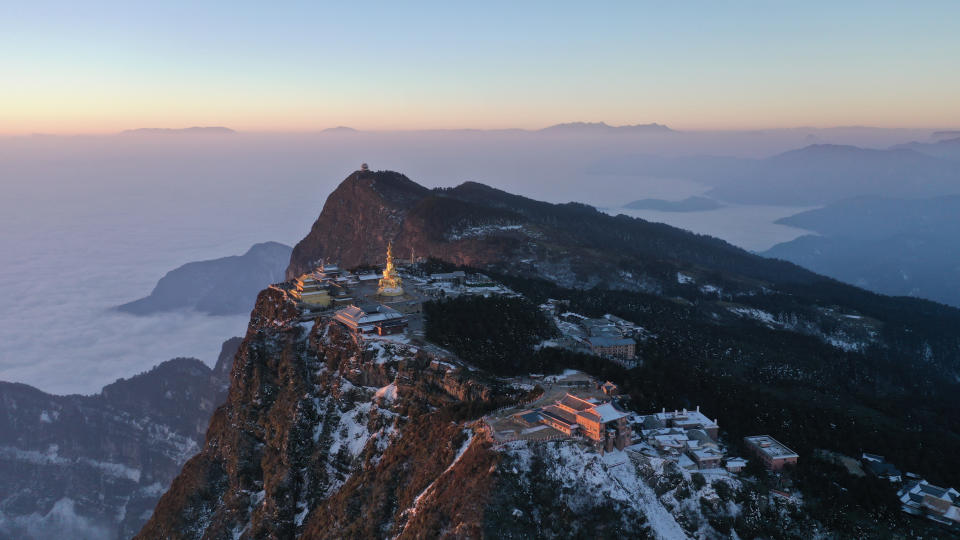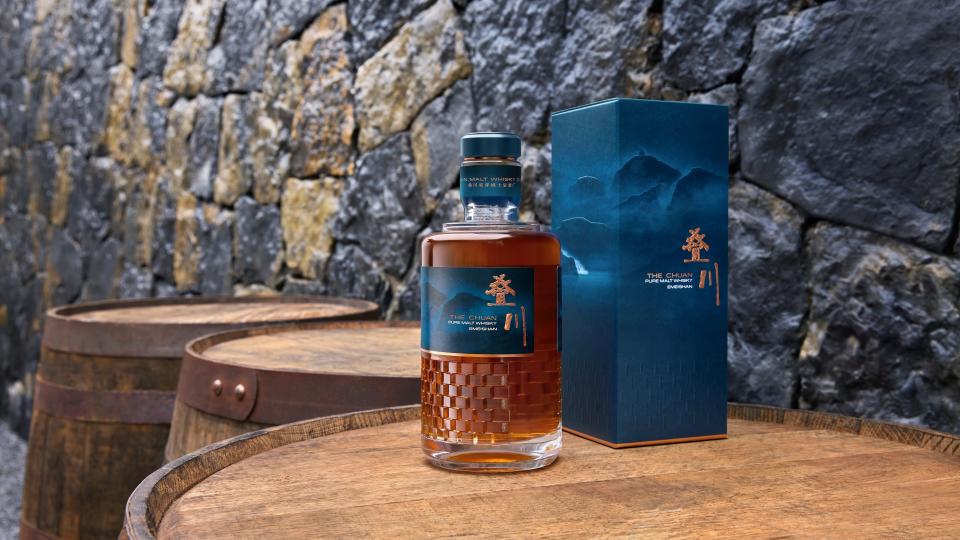What Makes a Good Whisky?

Surrounded by sacred mountains, flowing streams, and foggy roads, the Emei Mountains set the scene for newly established Chinese whisky label The Chuan.
The business, which has Dr. Yang Tao on board as master distiller, claims to have developed “a prestige whisky made in China.” For Tao, the surroundings are important.
More from WWD
Abel Macias Uses Folkloric Images to Lighten Up Stores, Hotels and Restaurants
China's Lunar New Year Spending Surpasses Pre-COVID-19 Levels
The Chuan Malt Whisky Distillery, located in the foothills of the sacred mountains in the Sichuan province, is French spirit maker Pernod Ricard’s first whisky distillery in China. It cost 1 billion renminbi, more than $140 million, and took five years to complete.


Access to quality water resources and a diverse micro climate makes the Emei area a perfect fit for whisky making. Moutai, a prestigious brand of Chinese white wine, comes from the same region.
Designed by the esteemed architecture firm Neri&Hu, the distillery’s compound includes whisky production facilities, a tasting center, a fine-dining restaurant and a tea room with a sweeping view of the majestic Emei Peak.
“It’s about creating an atmosphere to share among all whisky lovers,” says Tao. With circular and square buildings that cascade down a sloping terrain, the distillery touts a harmonious layout where the heaven and the earth meet, as noted in ancient Chinese philosophy.
“The Emei area is rich in culture and history, which is a key part of our creative process,” says Tao, musing about the reclusive nature of his Emei lifestyle. Competing boulders have successfully mesmerized many, including the wine-loving poet Li Bai, who claimed to have found the Daoist way of immortality in the misty mountains.

“You have the cowboy spirit inextricably linked to American whiskey; you have the Scottish whisky’s association to the British gentlemen; then there’s tremendous respect for craftsmanship embedded in Japanese whisky. Here at Emei, the beauty comes from the rich resources and spirited immortals that inhabit these mountains,” says Tao. “Confucianism, Buddhism, Taoism, can all find their heritage in Emei.”
The distillery opened in December and launched The Chuan Pure Malt Whisky, a spirit that fuses high-quality Scottish whisky-making techniques with local ingredients, priced at 888 renminbi, or $124 per bottle.
The Chuan, made with a mix of malted barley and imported barley, opens with an elegant, fruity, vanilla flavor, courtesy of an American bourbon cask. It is followed with a sweet overtone derived from a Spanish sherry cask, and then a sandalwood and mandarin peel finishing, from the special Chinese Single Oak cask, which uses a particular Chinese oak timber logged in the protected Changbai Mountain up north.

For Tao, the Chinese Single Oak was the last piece of the puzzle for creating a “whisky that can be truly representative of Chinese whisky distillery,” says Tao. According to Tao, the Chinese Single Oak can conjure up a sense of harmonious pureness only found in the highest temples of Emei Mountain.
Like the Japanese Mizunara oak, the Changbai log is also rare and porous. This allows the whisky to step deeper into the wood, increase its flavor intensity with more evaporation, and makes the whisky more precious.
But Chinese whiskey isn’t setting out on the path set by Japanese whisky — for Tao, the Chinese palette desires something “velvety like Kweichow Moutai,” says Tao.
“A clean and delightful texture is not necessarily viewed as luxurious,” adds Tao.
The Chuan whisky is meant to complement local cuisine, such spicy wantons and slivered pig ear snacks, or a full-course banquet designed by the Sichuanese Xu brothers of the Michelin-approved Yinba.
The distillery’s restaurant, The Yan — with a tasting menu that costs 888 renminbi, or $125 — offers a dynamic fine-dining experience that incorporates whisky-making techniques, including malting, distillation, fermentation, aging and barrel finishing, with traditional Sichuan flavors. Pork trotter soup, stewed for hours in sherry casks, or dry-aged beef cured on planes of Chinese oak for 60 days, are standouts of the current winter menu.

Three variations of The Chuan, ranging from 888 renminbi, or $125, to 1,488 renminbi, or $209, are available for purchase at the distillery and have been quietly rolling out in the Chinese market before debuting internationally.

Over the past few years, a growing interest in single malt whisky as a symbol of class and sophistication has created a rush to build distilleries — a few dozen and counting — in the Chinese market.
In 2021, Diageo, another leading drinks giant, broke ground on a $75 million single malt whisky distillery in Yunnan province. Laizhou Distillery, a notable local entrant, has found initial success by experimenting with Chinese yellow wine casks that resemble sherry casks.
“The whole industry is at a new starting point, we are all working through uncertainties,” says Tao of local market dynamics.
“But things are changing. It took Japanese whisky 100 years to become the GOAT, it took Taiwanese whisky 20 years, the process is speeding up,” adds Tao.
“Commonality is a core need we identified in the market,” says Tao. “Almost all alcohol is consumed at the dinner table in China, like that old saying, there’s no banquet without wine.”
“But we also have to take care of the purists too, who are somewhat obsessed with the idea of ‘cask strength,’ which is an appreciation of the depth and natural flavors that hit all the tasting notes,” says Tao.
Best of WWD

